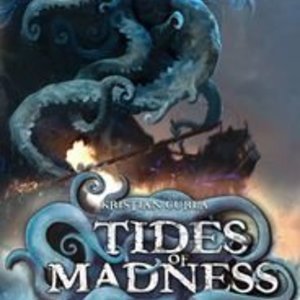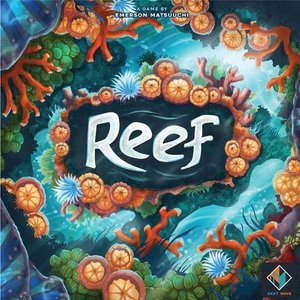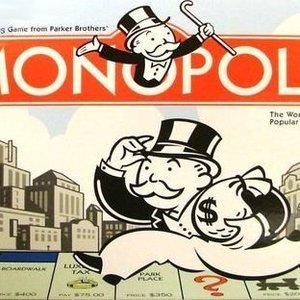Purple Phoenix Games (2266 KP) rated Tides of Madness in Tabletop Games
Dec 7, 2021
Tides of Madness is a game of card drafting and set collection in which 2 players are trying to amass the most points by the end of 3 rounds. To setup for a game, shuffle the deck and deal 5 cards to each player. Place the rest aside as a draw deck, and place the Madness tokens within reach. Each of the 3 rounds is broken down into 3 phases: Drafting, Scoring, and Refresh. During the Drafting phase, each player will choose one card from their hand to keep, and place it face-down in front of them. Once both players have chosen their card, they will be revealed simultaneously and placed in your tableau. Take the remaining cards from your hand and pass them to your opponent. You now draft another card from this new hand, and will then pass the cards again. Drafting continues in this fashion until both players have no cards remaining in hand.
The next phase, Scoring, now begins. Players check their tableau and take a Madness token for each card with a Madness icon. The player with the most Madness this round can choose to gain an additional 4 VP or heal (discard) one Madness token. An important note – if at any time a player receives 9 or more Madness tokens, they immediately lose the game! So keep an eye on those cards, and know when to heal. Next, players will score the cards based on printed objectives – sets of suits, majority of a suit, etc. Points are tallied on the score pad. Finally, the Refresh phase gets you ready for the next round. Each player collects their tableau and selects one card to keep for the next round, and another card to discard from the game. Players simultaneously reveal their kept card and it starts the round already in their tableau. Players will draw 2 new cards to total 5 in hand, and the next round is ready to begin. Play ends either if a player has 9 or more Madness, or after a total of 3 rounds. After the 3rd and final round, all points are added up and the player with the highest score wins.
So if you’re thinking this game is basically Tides of Time, you’re pretty much correct. The only difference between the two is the concept/mechanic of the Madness tokens. And honestly, I think the inclusion of the tokens elevates the strategy a bit. In Tides of Time, it really is all about set collection. But with Madness tokens, you’ve got some risk/reward balance to play with. Do you take a card to complete a set even though it gives you a Madness token? Or do you leave it for last so your opponent is forced to take it? The same applies to the extra step in the Scoring phase. Do you risk keeping all your Madness to snag 4 extra VP or is it better (and safer) to heal 1? It just adds another element to the gameplay that makes it feel a little more engaging and exciting than simple set collection.
To touch on components for a minute – this game consists of 18 oversized cards, a bunch of cardboard Madness tokens, a score pad, and small pencil. The artwork on the cards is appropriately thematic and dark, and the text is clear and easy to interpret. The Madness icon on certain cards is a bunch of tentacles on the side of the card, and it is easy to see which cards are affected and which are not. The tokens and score pad are both decent quality as well. Although not 100% necessary, I appreciate the inclusion of a score pad just to help you remember points between rounds. All in all, good production all around.
I have to say that of the two, I prefer Tides of Madness over Tides of Time. You may have noticed that I have rated both games at a 4, but the Madness element in this one just pushes it over the top for me. Both are good games, don’t get me wrong! Either work as a good set collection/drafting game, and are quick to learn and play. Tides of Madness just engages me a little more and that makes the overall gameplay more enjoyable for me. So all in all, Purple Phoenix Games gives this one a maddening 4 / 6.
Purple Phoenix Games (2266 KP) rated Reef in Tabletop Games
Aug 1, 2019
Reef is an abstract hand management, pattern building game that challenges the players to become coral reef architects and rebuild our fragile underwater ecosystem. This is a lofty goal, as our coral reefs in the real world are hurting for rejuvenation something fierce.
DISCLAIMER: I do not intend to cover every single rule included in the rule book, but will describe the overall game flow and major rule set so that our readers may get a sense of how the game plays. For more in depth rules, you may purchase a copy from the publisher directly or from your FLGS. -T
Setup is easy: shuffle the player mats and deal one to each player. The player that received the one board containing the starfish will be the starting player. Deal the players one of each colored coral piece, two cards from the deck, and 3 VP tokens. Place your reef chunks in the middle of your board in any order and you are ready to play!
On your turn you can do one of two things: draw a card or play a card. There are three cards face up to form the offer row, or a player can pay a VP token to the card with the lowest printed VP total to take the face up card on top of the draw pile (a la Small World). When you play a card, you immediately take the coral pieces on the card and place them on your play mat. The pieces can be stacked on other pieces of the same or different color, or on a blank spot on the mat. Once done, you check the card you played for any scoring conditions you may have met from your play mat. I will not go into detail about scoring, but there are several types of scoring that are employed in a game of Reef. The game continues in this manner until all of one color of coral pieces are used up. Players finish the round and then count their VP tokens. The winner is the player with the most VPs.
Components. The box is, what, normal sized? And the art on it is wonderful. So colorful and instantly recognizable. In fact, the art on the game in its entirety is truly amazing. I love it! The cards are of fine quality, but since they are handled a bit I sleeved mine. The VP tokens are of good quality, and I like that the pieces aren’t just perfect circles. It’s not a huge deal, but it helps with immersion just that much more. Same for the player mats. They could have been just as effective with square mats, but just that bit of wave makes it more enjoyable to play on for me. The big chunky coral pieces are so fun to play with, and handle, and, honestly, drop. They are very satisfying and great for those with colorblindness since they are all different shapes for the different colors they represent. All in all, Next Move Games knocks it out of the park on components AGAIN!
As you can tell by our score, we really like this game a lot. The first time I played it, my father-in-law used an interesting strategy and won the game. The next time I played it, I tried to use that same strategy and came in 3rd place. So, I chalked that win up to luck of the (card) draw and am now seeking more varied strategies to become the King of Reef. This is perhaps what also keeps the game from being a Golden Feather Award winner – I can play my game strategy and you can play yours, but that’s it. There is no real player interaction. As one Duke of Dice Alex would sing it, Reef is actually just “multiplayer solitaire.” While that is completely appropriate and non-offensive, I believe that with some more player interaction I would be more apt to bump this one to a 6. That said, we at Purple Phoenix Games give Reef a well-deserved bubbly score of 15 / 18. Emerson has himself another hit and I am proud to have it in my collection. You should grab it too, maybe.

The Crew: The Quest for Planet Nine
Tabletop Game
In the co-operative trick-taking game The Crew: The Quest for Planet Nine, the players set out as...
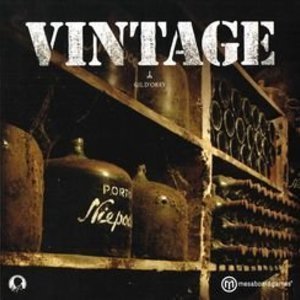
Vintage
Tabletop Game
Vintage is about the Douro River Valley of Portugal, the oldest demarcated wine producing region in...
Boardgames Winegames
Suswatibasu (1703 KP) rated Monopoly in Tabletop Games
Mar 18, 2018
But it's an absolute classic, and as a cautious spender, I tended to lose miserably and most of the London places have now been gentrified so the brown areas no longer exist, hence I've no places to buy anymore. Alas many pleasant memories.
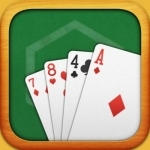
Kout by koutbo6.com
Games and Social Networking
App
Play kout like you have never played it before. Kout is a popular Spades variant from the middle...

Food Chain Island
Tabletop Game
On this forgotten island in a tiny corner of the ocean the animals are hungry! Your goal is to...

The King's Cup (Drinking Game)
Entertainment and Games
App
The classic party game The King's Cup transformed into app form! Never played before? It couldn't...
Purple Phoenix Games (2266 KP) rated Yarr Harr! in Tabletop Games
Jul 2, 2020
Disclaimer: We were provided a copy of Yarr Harr! for the purposes of this preview. The final components of the upcoming Kickstarter campaign might vary slightly from those pictured below. Also, our copy had some extra cards/content that will be available as Stretch Goals during the campaign. -L
Yarr Harr! is a competitive card game in which players are building up their individual pirate ships and trying to amass the most Doubloons by the end of the game. The gameplay itself is pretty simple, but actually winning takes more strategy than you might think. To setup the game, every player receives a Bow and Stern card for their Harbor (play area), and a starting hand with 5 cards. The remaining cards form the Draw deck for the game, and is placed in the center of the play area. On your turn, you will draw 2 cards from the Draw deck, and then play up to 3 cards. There are 2 different types of cards that can be played: Ship cards and Action cards. Ship cards, played between your own Bow and Stern cards, are used to build up your ship and score points at the end of the game. Action cards are used to sabotage opponents or to give yourself a buff. You may not play more than 2 Ship cards in one turn, and you may only have a maximum of 8 cards in your hand at the end of your turn. Play continues as such, until the end-game requirement has been met. That requirement depends on the number of players in the game, and tells you how many Ship cards must be in your own Harbor for the game to end. As soon as any 1 player achieves that number, the game ends. Players then tally up all of the Doubloon points on the Ship cards in their Harbor, subtracting any negative points from Action cards affecting their ship, and the player with the most Doubloons wins!
The thing that I like about Yarr Harr! the most is that it can be played with differing levels of strategy. The game comes with a number of Captain cards and Objective cards that are optional to use in play. To include Captain cards, each player receives 1 Captain card at the start of the game, which grants special abilities throughout the game, depending on the given Captain. To play with Objective cards, each player receives 3 Objective cards at the start of the game, and then selects 2 to keep for play. Objectives are kept secret from your opponents, and will earn you end-game Doubloons upon completing them. With these optional modes of play, you can really cater the strategic level to that of your current game group. You can play with younger gamers with no extra content, just the base game as described above. If you are looking to turn this into a possibly more difficult game, add in those Captain and Objective cards. Offering those optional elements is a huge plus because it makes Yarr Harr! accessible to more gamers. So that’s a big win to me.
The other thing that I really like about Yarr Harr! is that the gameplay is pretty light and fast. It is easy to teach, learn, and play, thus lending itself to lots of gaming situations. Need something quick to play before dinner is ready? Yarr Harr! Want to pick the pace back up after a long, brain-burning game at game night? Yarr Harr! It can fit in wherever you want, and because of that, I can see myself bringing it to the table often. The only warning I have for this game is that, since it is competitive, more sensitive gamers might not find it enjoyable. There are Action cards to be played to directly sabotage and inhibit your opponents, and sometimes that can feel like personal attacks against a player. To alleviate that, I recommend playing at higher player counts, so it doesn’t feel like players are ganging up on a single player. Just something to be aware of! Let’s talk components. This is a card game, and the quality of the cards we received was pretty good. They are nice and sturdy, and could hold up for many plays. The artwork is thematic, creative, colorful, and just enjoyable to look at overall.
All in all, I think Yarr Harr! is a fast and fun game for any type of gamer. The varying degrees of difficulty and strategy make it a versatile game, and I really appreciate that aspect. It is a competitive game, but it feels more light-hearted than cutthroat and that helps keep it enjoyable for all players. If you’re looking for something fun, yet strategic, and easy to play, look no further than Yarr Harr! The Kickstarter campaign begins on June 23rd, so be on the lookout for this awesome little card game!
Purple Phoenix Games (2266 KP) rated Cooking Customers in Tabletop Games
Feb 4, 2020
DISCLAIMER: We were provided a copy of this game for the purposes of this review. This is a retail copy of the game, so what you see in these photos is exactly what would be received in your box. I do not intend to cover every single rule included in the rulebook, but will describe the overall game flow and major rule set so that our readers may get a sense of how the game plays. For more in depth rules, you may purchase a copy online or from your FLGS. -T
Cooking Customers is a card and dice game where the first player to amass $20 in “tips” will be crowned the winner. Players earn tips by serving enough meals to customers at each table. Players can receive meals by rolling them on dice, or by card manipulation. Let me explain.
To setup, place the meals (black discs) in the middle of the table for all to reach. Similarly, place all the dice nearby. These dice have three sides: FIRED, MEAL, and a blank side. Shuffle the mighty deck of cards and deal five to each player, placing the rest of the deck in the middle of the table. Finally, shuffle the Table cards and place somewhere near the other components. Players are now ready to begin!
On a player’s turn, they will first draw the topmost Table card to be placed in front of themselves. This card will show how many meals need to be served to it to be satisfied and earn tips. The Table cards will mostly just sit there in front of players collecting meal discs for the game’s duration. Once a Table card is drawn (and only one Table per player, please) the active player may then play cards from hand. A player may play one or two cards, but only one card may be played to the active player’s tableau, and only one card may be played on an opponent. Should a player not wish to play a card to anyone’s tableau, they must discard a card to the middle of the table. Then the active player will draw back to the hand size of five cards.
Cards played to other players are usually bad, Munchkin-esque cards that halt progression or just cause mayhem for their designs. I will not go into detail on these, as half the fun of this game is the Take-That of these cards. Cards played to a player’s own tableau can be a myriad choices: Cooks, Helpers, Kitchen Supplies, etc. The most important are the Cook cards. A player will need to have a Cook “hired” in front of them in order to participate in the next phase of the game: rolling dice. Players can have Helper cards (sous chefs) and Kitchen Supplies active without a Cook, but the player may not roll dice or serve meals without a Cook. Cooks and Helpers will dictate how many dice are rolled in the next phase of a turn, and rolling more dice is always better.
Once all cards have been played on a player’s turn, they may now roll the dice (though for a game with such a dark theme I say we use the “Roll Them Bones” colloquialism). When the dice are rolled, players are hoping for MEAL to show up on all dice. This is how a meal can be collected and served to the Table cards. However, if at any time all dice read FIRED then the player’s Cook is fired and they may not continue rolling dice. The Cook is discarded and play is forfeited to the next player. #cheflife amirite?
Once a Table card has all the meals it needs to be satisfied, the player may score it by flipping it over to reveal the amount in tips they have earned. Play continues in this fashion until one player has earned $20 in tips. They can then taunt the other players with their superiority.
Components. Cooking Customers is a BUNCH of cards, some painted wooden discs, and some embossed dice. The cards are good quality, the discs are good as well, and the dice are great. All the components are pretty darn good. The art, though gross at times, is really well-done (see what I did there) and kept us laughing throughout our plays.
I do have one qualm about this game: the rulebook. Though only six pages long and with lots of illustrations throughout, I found that reading it made me more confused than it should have. I did take the rulebook’s advice to go to the publisher’s website, goodenoughgames.com, and watch the rules explanation and playthrough. That helped immensely to clear up what the rulebook did to my brain.
All in all, we had a great time playing this one. We all like Munchkin, and though it is NOT Munchkin, Cooking Customers delivers a take-that dice and card game that really is worth checking out. If you are looking for something with a new theme that plays quickly and has some meat on its bones (and there), then we certainly recommend Cooking Customers. Purple Phoenix Games gives this one a hearty (food puns are too easy) 13 / 18. You can purchase a copy at goodenoughgames.com currently. While you’re there please watch the video.
